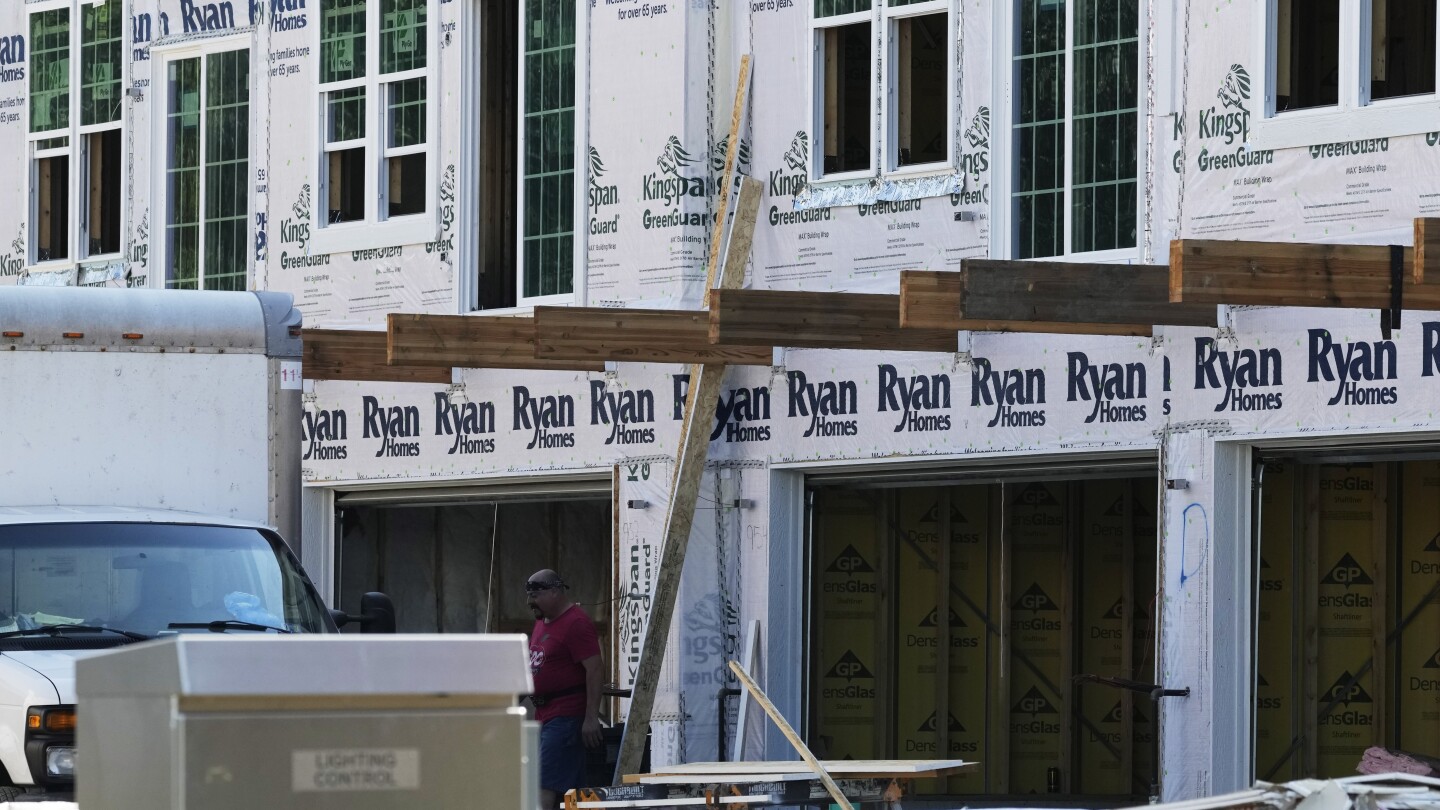LOS ANGELES (AP) — Homebuilder stocks are having a banner year, outpacing the broader market on a wave of optimism that mortgage rates will fall and help juice home sales into 2025.
The S&P Composite 1500 Homebuilding Index, which includes 16 stocks, including homebuilders Lennar, D.R. Horton, KB Home and PulteGroup, is up about 29% so far this year. while the benchmark S&P 500 has risen about 18%.
The sector typically notches gains in the months surrounding the start of a Federal Reserve rate cutting cycle. But analysts say there’s reason to be skeptical that builder stocks will remain on a tear this time.
“We see a few key risks to the recent rally,” analysts at BofA Securities wrote in a research note this week.
Builder stocks started the year strong, but lost ground in the April-June quarter as the average rate on a 30-year mortgage surged above 7%.
The sector rallied again in the current quarter as mortgage rates eased and signs of waning inflation and a cooling job market fueled expectations of the first Fed rate cut in four years. Mortgage rates are influenced by factors including how the bond market reacts to the Fed’s interest rate policy decisions.
In the three months before and after the Fed cuts rates, homebuilder stocks have outperformed the S&P 500 index in three out of the last five such periods, according to BofA.
Still, the BofA analysts and many economists contend that the recent pullback in mortgage rates already reflects a Fed rate cut. Mortgage rates tend to track the moves in the 10-year Treasury yield.
BofA’s mortgage-backed securities team forecasts that the average rate on a 30-year mortgage will be between 5.75% and 6% by the end of the year. That implies the bulk of the decline has already happened.
Other potential red flags: Homebuilder stock valuations are elevated after their sharp runup this year and the job market has been weakening.
“In our view, the stock performance has been stronger than the improvement in underlying fundamentals as investors look through near-term weakness to a 2025 recovery fueled by lower mortgage rates and pent-up demand.” the analysts wrote.

